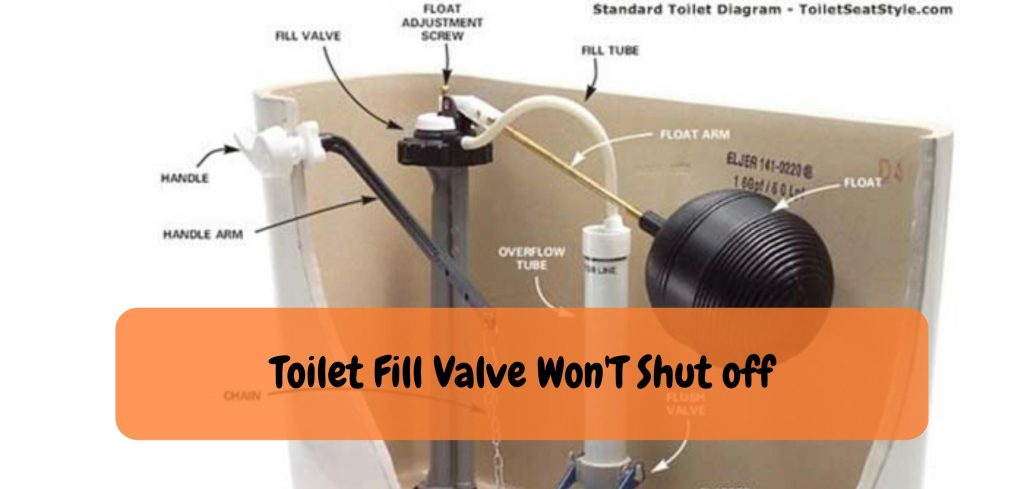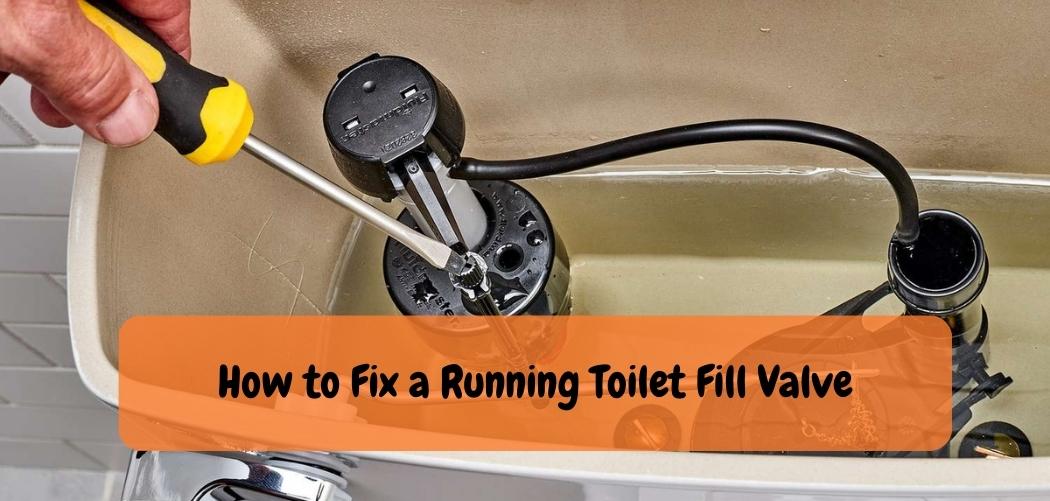A running toilet can be a frustrating and wasteful problem to deal with. One common culprit of a running toilet is a faulty fill valve. The fill valve is responsible for regulating the water flow into the toilet tank and refilling it after each flush.
If you’re experiencing a running toilet due to a malfunctioning fill valve, fear not! With some basic plumbing skills and the right steps, you can fix it yourself.
In this guide, we will provide you with a step-by-step process on how to fix a running toilet fill valve, from identifying the problem to adjusting or replacing the fill valve. By following these instructions, you can save water, money, and prevent further damage to your toilet. Let’s get started!
Running Toilet Fill Valve Fixing Guide
If you’re experiencing a running toilet due to a malfunctioning fill valve, here’s a step-by-step guide on how to fix it.
Step 1: Identify the Problem
The first step in fixing a running toilet fill valve is to identify the issue. Typically, a fill valve may be faulty if it fails to shut off the water flow into the toilet tank, causing the water to continuously run. Listen for the sound of running water in the toilet tank, and observe if the water level rises above the overflow tube or if the water continues to flow into the tank without stopping.
Step 2: Turn Off the Water Supply
Before working on your toilet, it’s important to turn off the water supply to the toilet tank. Locate the shut-off valve, usually located on the wall or floor near the base of the toilet, and turn it clockwise until it is fully closed. Flush the toilet to drain the water from the tank and reduce the risk of water spillage during repairs.
Step 3: Remove the Toilet Tank Lid
Carefully remove the toilet tank lid by lifting it off and setting it aside in a safe place. Be cautious as the lids can be heavy and fragile.
Step 4: Inspect the Fill Valve
Inspect the fill valve for any visible signs of damage or wear. Check for cracks, leaks, or mineral deposits that may be obstructing the valve’s proper function. If you notice any issues, it may be necessary to replace the fill valve.
Step 5: Adjust the Water Level
If the fill valve appears to be in good condition, the issue may be with the water level in the toilet tank. Most fill valves have an adjustable float arm or a water level adjustment screw that can be used to adjust the water level. Follow the manufacturer’s instructions to adjust the water level to the recommended level, usually indicated by a marked line on the overflow tube.
Step 6: Clean or Replace the Fill Valve
Mineral deposits or debris can sometimes accumulate in the fill valve, causing it to malfunction. To clean the fill valve, turn off the water supply and disconnect the fill valve from the water supply line. Use a brush or a cloth to clean the valve and remove any obstructions. If the fill valve is severely damaged or worn out, it may be necessary to replace it with a new one.
Step 7: Reassemble and Test
Once you have cleaned or replaced the fill valve, reassemble the toilet tank by reconnecting the fill valve to the water supply line and tightening the connections. Turn on the water supply to the toilet tank by turning the shut-off valve counterclockwise. Allow the tank to fill with water, and then flush the toilet to check if the fill valve is functioning properly. The water should stop flowing once the tank is full, and there should be no sounds of running water.
Step 8: Fine-Tune the Adjustment
If necessary, you can fine-tune the water level adjustment to ensure optimal performance of the fill valve. Adjust the float arm or water level adjustment screw to achieve the desired water level in the tank, as per the manufacturer’s recommendations.
Who Makes the Best Toilet Fill Valve?
Toilet Fill Valve Won’T Shut off

If your toilet fill valve won’t shut off, it’s likely due to a problem with the float. The float is a component of the fill valve that controls how much water flows into the toilet tank. If the float is stuck in the “up” position, it will prevent the fill valve from shutting off properly.
To fix this problem, you’ll need to adjust or replace the float. In most cases, adjusting the float is all that’s needed to fix a toilet fill valve that won’t shut off. To do this, simply bend the wire that connects the float to the fill valve until the float sits at the proper level in relation to the water line.
If your toilet has a plastic ball float, you may need to unscrew it from its housing and adjust it accordingly. If adjusting or replacing the float doesn’t solve your problem, there may be an issue with debris caught in the fill valve itself. Use a toothpick or other small object to clear any dirt or grit from inside of the valve body.
Once you’ve cleared away any obstructions, reassemble everything and give it another try
– your toilet should now function properly!
Which Toilet Fill Valve is the Best?
Fluidmaster 400 Model Toilet Fill Valve Review
How to Fix a Running Toilet Without a Ball Float
If your running toilet doesn’t have a ball float, don’t worry
– there are still ways to fix it! First, check to see if the water level in the tank is too high. If it is, adjust the fill valve until the water level is just below the overflow tube.Next, check for leaks around the flush valve seal and make sure that it’s seated properly. If there’s any damage to the seal, replace it. Finally, listen for any hissing sounds coming from the tank
– this could indicate a leak in the supply line. If you hear a leak, turn off the water at the shut off valve and call a plumber.
How to Install a Fluidmaster Toilet Fill Valve?
How to Fix a Running Toilet With a Button Flush?
A running toilet is one of the most annoying household problems. Not only is it a waste of water, but it can also be quite loud. Luckily, there is an easy way to fix this problem
– by simply replacing the button flush. Here’s how:
1. First, turn off the water supply to your toilet. This is usually located behind the toilet.
2. Next, flush the toilet to empty out the tank.
3. Now, remove the old button flush by unscrewing it from the tank (it will be attached with two screws). Be careful not to drop it into the tank!
4. Take your new button flush and screw it into place, making sure that it’s tight.
5. Finally, turn on the water supply and test out your new button flush by flushing the toilet again. It should work like a charm!
How Does A Toilet Fill Valve Work?
10 Best Toilet Fill Valve for Hard Water
Fix a Running Toilet…Fill Valve Replacement — by Home Repair Tutor
Conclusion
Fixing a running toilet fill valve is a relatively straightforward process that can be done with some basic plumbing skills and careful attention to detail. By following the steps outlined in this guide, you can identify and address the issue with your fill valve, effectively stopping the constant flow of water and resolving the problem of a running toilet.
Remember to always prioritize safety, turn off the water supply before making any repairs, and follow the manufacturer’s instructions for your specific fill valve.
If you’re not comfortable with DIY repairs or the issue persists, it’s always best to seek the assistance of a professional plumber. By taking action to fix a running toilet fill valve, you can save water, conserve resources, and ensure the proper functioning of your toilet. Happy repairing!










